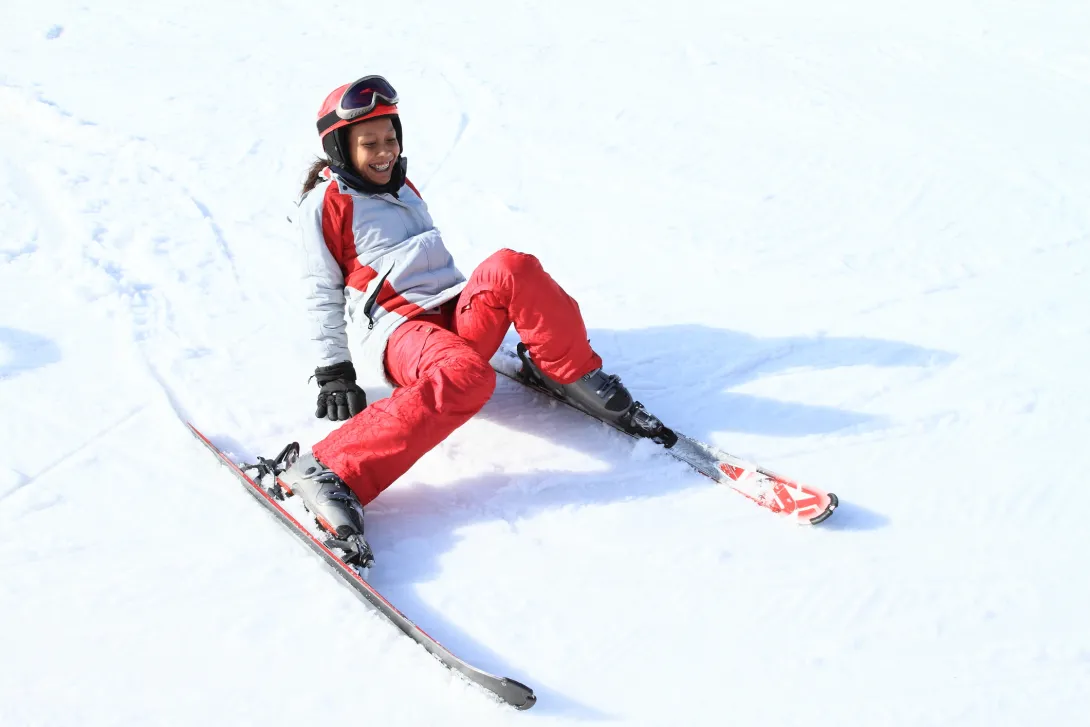Falling on skis can be intimidating, but it is an inevitable part of learning to ski. The best way to fall on skis and avoid injury is to use proper technique and body positioning.
Falling while skiing is a common and natural part of the learning process. Most beginners, and even some experienced skiers, will fall at some point while skiing. This is because skiing involves complex movements and skills that can be challenging to master, and it is normal to make mistakes and lose balance or control on the slopes.
Falling while skiing does not have to be a negative or scary experience. With the right technique and body positioning, you can fall safely and avoid injuries. And with practice and persistence, you can improve your skills and confidence on the slopes, and you can reduce the frequency and severity of your falls.

Here are some tips to help you fall safely on the slopes:
When you start to fall, it is important to relax your body and let go of any tension or stiffness. This will help you absorb the impact of the fall and reduce the risk of injury.
One common mistake that people make when falling is to try to reach out with their hands or arms. This can cause you to twist or rotate your body, which can increase the risk of injury. Instead, try to keep your hands and arms close to your body.

Another way to fall safely on skis is to roll with the fall, rather than trying to stop or resist it. This will help you distribute the impact across your body and avoid injuries to specific joints or muscles.
If possible, try to stay on your feet as you fall. This will help you maintain control and balance, and it will reduce the risk of tumbling or sliding out of control.
Finally, don't forget to use your skis to help you fall safely. You can use the edges of your skis to slow down or steer, and you can use your poles to help you balance and regain your footing.
How to get up after falling

If you fall on skis, it is important to get up as quickly and safely as possible. Here are some steps to follow to get up after falling on skis:
-
Take a moment to assess your situation: Before you get up, take a moment to assess your situation and make sure that it is safe to do so. Look around and make sure that there are no other skiers or obstacles that could cause you to fall again.
-
Release your bindings: If your skis are still attached to your feet, release your bindings to free yourself from the skis. This will make it easier to move and regain your balance.
-
Push yourself up: Once you are free from the skis, use your hands and arms to push yourself up into a sitting position. Avoid reaching out with your hands or arms, as this can cause you to twist or rotate your body, which can increase the risk of injury.
-
Put your skis back on: Once you are in a sitting position, put your skis back on and secure your bindings. This will help you regain your balance and stability.
-
Stand up: Finally, stand up slowly and carefully. Use your poles to help you balance, and use your skis to slow down or steer if necessary. Once you are standing, take a moment to regain your composure and prepare for your next run.
How can you avoid falling while skiing?

Falling while skiing is an inevitable part of learning to ski, but there are some steps you can take to avoid falls and stay safe on the slopes. Here are some tips to help you avoid falling while skiing:
One of the best ways to avoid falling while skiing is to take ski lessons from a professional instructor. Ski lessons can teach you proper technique and safety guidelines, which can help you avoid common mistakes and reduce the risk of falls.
Another way to avoid falling while skiing is to practice good body positioning. This means keeping your weight forward, keeping your hips and shoulders aligned, and keeping your hands and arms close to your body. Good body positioning can help you maintain balance and control on the slopes.
Another important tip to avoid falling while skiing is to be aware of your surroundings. This means looking ahead and scanning the terrain, checking for other skiers, and avoiding obstacles or hazards. Being aware of your surroundings can help you avoid falls and stay safe on the mountain.
Finally, don't be afraid to take breaks and rest when you need to. Skiing can be physically and mentally demanding, and it is important to avoid fatigue and overexertion. By taking breaks and resting, you can recharge your energy and focus, and you can avoid falls caused by exhaustion or distraction.
Bottom line
Overall, the best way to fall on skis and avoid injury is to use proper technique and body positioning. By relaxing your body, avoiding reaching out, rolling with the fall, staying on your feet, and using your skis, you can minimize the risk of injury and enjoy a safer and more enjoyable skiing experience.
Falling while skiing is a common and natural part of the learning process. By adopting a positive and resilient attitude, and by using proper technique and body positioning, you can fall safely and avoid injuries, and you can continue to learn and improve as a skier.







